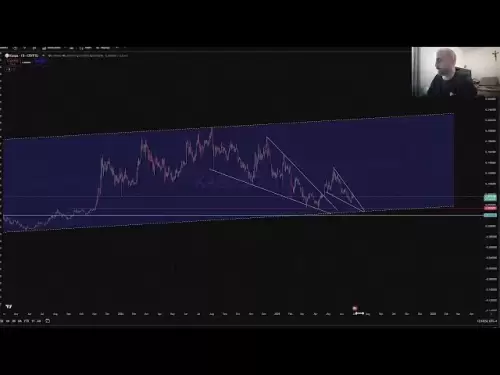-
 Bitcoin
Bitcoin $107,341.7259
0.15% -
 Ethereum
Ethereum $2,438.6204
0.70% -
 Tether USDt
Tether USDt $1.0003
-0.02% -
 XRP
XRP $2.1866
1.94% -
 BNB
BNB $649.0952
0.36% -
 Solana
Solana $150.9602
5.63% -
 USDC
USDC $0.9999
0.00% -
 TRON
TRON $0.2742
0.40% -
 Dogecoin
Dogecoin $0.1645
1.93% -
 Cardano
Cardano $0.5669
1.18% -
 Hyperliquid
Hyperliquid $37.8286
4.19% -
 Bitcoin Cash
Bitcoin Cash $491.4669
-2.74% -
 Sui
Sui $2.8150
3.06% -
 Chainlink
Chainlink $13.4184
2.91% -
 UNUS SED LEO
UNUS SED LEO $9.0809
0.27% -
 Avalanche
Avalanche $18.0295
2.60% -
 Stellar
Stellar $0.2396
1.19% -
 Toncoin
Toncoin $2.8587
0.13% -
 Shiba Inu
Shiba Inu $0.0...01160
2.59% -
 Litecoin
Litecoin $86.4192
1.45% -
 Hedera
Hedera $0.1486
1.19% -
 Monero
Monero $308.4324
0.87% -
 Polkadot
Polkadot $3.4202
1.43% -
 Bitget Token
Bitget Token $4.6436
-0.34% -
 Dai
Dai $0.9998
-0.02% -
 Ethena USDe
Ethena USDe $1.0002
0.00% -
 Uniswap
Uniswap $7.1527
3.29% -
 Pi
Pi $0.5357
-8.45% -
 Pepe
Pepe $0.0...09588
4.61% -
 Aave
Aave $259.9759
0.81%
Why does the price of USDT vary on different exchanges? How to take advantage of this?
USDT price varies across exchanges due to liquidity, arbitrage, regulations, and technical issues; traders can exploit these differences with careful planning and quick action.
Apr 02, 2025 at 08:01 am
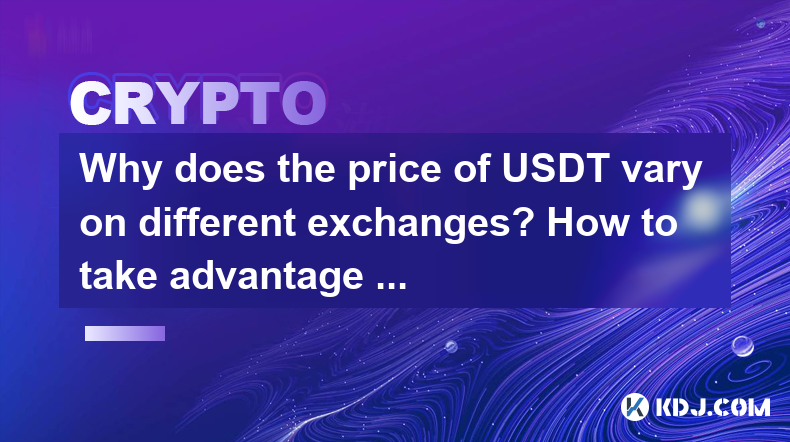
Understanding USDT Price Discrepancies Across Exchanges
The price of Tether (USDT), despite aiming for a 1:1 peg with the US dollar, often fluctuates slightly across different cryptocurrency exchanges. This isn't due to inherent instability in USDT itself, but rather reflects the complexities of the cryptocurrency market and the varying liquidity and trading dynamics on each platform. Several factors contribute to these price differences.
One major factor is the liquidity of USDT on each exchange. Exchanges with high trading volume generally exhibit a price closer to the $1 peg because there's a constant flow of buy and sell orders. Conversely, exchanges with lower trading volumes might show slight deviations as supply and demand imbalances occur.
Another key factor is the arbitrage opportunity. Arbitrage is the simultaneous buying and selling of an asset to profit from price differences. Sharp-eyed traders constantly monitor USDT prices across exchanges, exploiting minor discrepancies to make quick profits. This arbitrage activity itself helps to keep prices relatively stable, but it doesn't eliminate the initial variations.
Furthermore, the regulatory environment and the specific policies of each exchange play a role. Some exchanges might have stricter KYC/AML (Know Your Customer/Anti-Money Laundering) procedures, potentially affecting liquidity and impacting USDT's price. Different fees and withdrawal limits also influence the perceived value and thus the price.
Finally, technical issues on specific exchanges, such as temporary glitches in their trading systems or delays in processing transactions, can also lead to short-term price deviations. These anomalies are typically resolved quickly, but they can create temporary arbitrage possibilities.
How to Potentially Take Advantage of USDT Price Differences
Capitalizing on USDT price discrepancies requires careful planning, quick execution, and a strong understanding of market dynamics. It's crucial to remember that arbitrage opportunities are often short-lived and require swift action.
Monitor USDT Prices: Use real-time cryptocurrency tracking tools to monitor USDT prices across various exchanges simultaneously. Look for significant deviations from the $1 peg.
Choose Reputable Exchanges: Select exchanges with a strong reputation, high liquidity, and reliable trading infrastructure. This minimizes the risk of encountering technical issues or scams.
Assess Trading Fees: Carefully factor in trading fees and withdrawal fees when calculating potential profits. These fees can significantly eat into your gains.
Manage Risk: Never invest more than you can afford to lose. Arbitrage trading, while potentially lucrative, carries inherent risks. Start with small amounts to test your strategy.
Be Quick: Arbitrage opportunities disappear quickly. You need to act swiftly to execute trades before the price differences disappear due to market forces and other traders.
Utilize Automated Tools: Some advanced traders use automated trading bots to identify and exploit arbitrage opportunities more efficiently. However, these tools require a good understanding of programming and market analysis.
Understand Market Volatility: The cryptocurrency market is inherently volatile. Unexpected events can drastically shift prices, potentially negating your arbitrage profits or even leading to losses.
Understanding the Risks
While exploiting USDT price differences can be profitable, it's essential to acknowledge the risks involved. These include:
Transaction Fees: High transaction fees can significantly reduce profits or even turn a potentially profitable trade into a loss.
Slippage: Slippage occurs when the actual execution price of your trade differs from the expected price, often due to market volatility.
Exchange Delays: Delays in processing transactions on one or both exchanges can affect the profitability of your arbitrage strategy.
Regulatory Changes: Changes in regulations can impact the availability and legality of arbitrage trading.
Security Risks: Always prioritize security when selecting and using cryptocurrency exchanges. Choose platforms with robust security measures to protect your funds.
Frequently Asked Questions
Q: Is arbitrage trading with USDT legal?
A: Generally, arbitrage trading is legal, provided it complies with all applicable laws and regulations in your jurisdiction. However, some jurisdictions may have specific rules regarding cryptocurrency trading.
Q: How much profit can I realistically expect from USDT arbitrage?
A: The profit margin from USDT arbitrage is typically small, often ranging from a few basis points to a few percentage points. High-volume trading is necessary to generate significant profits.
Q: Are there any reliable tools to help with USDT arbitrage?
A: Several websites and software applications provide real-time cryptocurrency price tracking and market analysis. However, it's crucial to verify their reliability and security before using them.
Q: What are the best exchanges for USDT arbitrage?
A: The "best" exchanges for arbitrage depend on various factors, including liquidity, fees, and security. Research and compare multiple exchanges to find those that suit your needs and risk tolerance. Consider exchanges with high trading volume for better liquidity.
Q: Can I use automated bots for USDT arbitrage?
A: Yes, but this requires technical expertise and careful consideration of the risks involved. Improperly configured bots can lead to significant losses. Thoroughly research and test any automated trading bot before using it with real funds.
Disclaimer:info@kdj.com
The information provided is not trading advice. kdj.com does not assume any responsibility for any investments made based on the information provided in this article. Cryptocurrencies are highly volatile and it is highly recommended that you invest with caution after thorough research!
If you believe that the content used on this website infringes your copyright, please contact us immediately (info@kdj.com) and we will delete it promptly.
- Trump, Bitcoin, and Peter Schiff: A New York Minute on Crypto Chaos
- 2025-06-29 12:30:12
- BTC Price, BlackRock ETF, Fed Signals: Decoding the Crypto Crossroads
- 2025-06-29 12:30:12
- SEI Price Skyrockets Amid ETF Hype and Bullish Uptrend: What's Next?
- 2025-06-29 12:50:11
- Bitcoin Mining, Cryptocurrency, and Blockchain: A New York State of Mind
- 2025-06-29 13:10:11
- Pengu, Altcoin, Leads Charge: What's Driving the Meme Coin Frenzy?
- 2025-06-29 13:30:12
- Bitcoin Market Navigates the Neutral Zone: An On-Chain Data Perspective
- 2025-06-29 13:50:12
Related knowledge

How to choose a reliable USDT exchange service provider? How to identify?
Jun 12,2025 at 03:15pm
Understanding the Role of USDT in Cryptocurrency TradingUSDT (Tether) is one of the most widely used stablecoins in the cryptocurrency market. It is designed to maintain a 1:1 peg with the U.S. dollar, offering traders and investors a way to hedge against volatility while remaining within the crypto ecosystem. Choosing a reliable USDT exchange service p...

What is the most convenient way to cash out small amounts of USDT? Is there a shortcut?
Jun 11,2025 at 11:00pm
Understanding the Need to Cash Out Small USDT AmountsCashing out small amounts of USDT can be a challenge for many crypto users. Traditional methods often involve high fees, minimum withdrawal limits, or cumbersome verification processes that make it inefficient for small transactions. The key is to find a method that balances speed, cost, and convenien...

How to transfer USDT to PayPal or international payment tools?
Jun 15,2025 at 05:28am
Understanding the Basics of USDT and PayPal IntegrationUSDT (Tether) is a stablecoin pegged to the US dollar, offering blockchain-based value transfer with minimal volatility. PayPal, on the other hand, is a centralized digital wallet that facilitates fiat currency transactions globally. Direct integration between USDT and PayPal does not exist due to t...
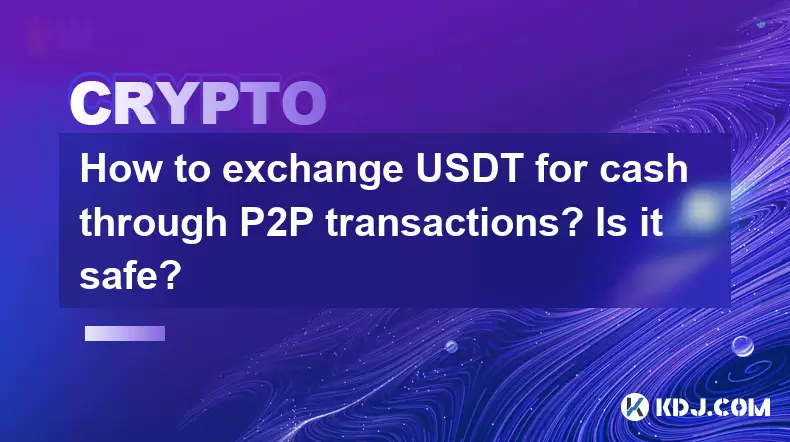
How to exchange USDT for cash through P2P transactions? Is it safe?
Jun 18,2025 at 07:56am
Understanding USDT and P2P TransactionsTether (USDT) is a stablecoin pegged to the value of the US dollar, making it a popular choice for users who want to avoid the volatility of other cryptocurrencies while still participating in the crypto ecosystem. Peer-to-peer (P2P) transactions allow individuals to trade directly with each other without going thr...
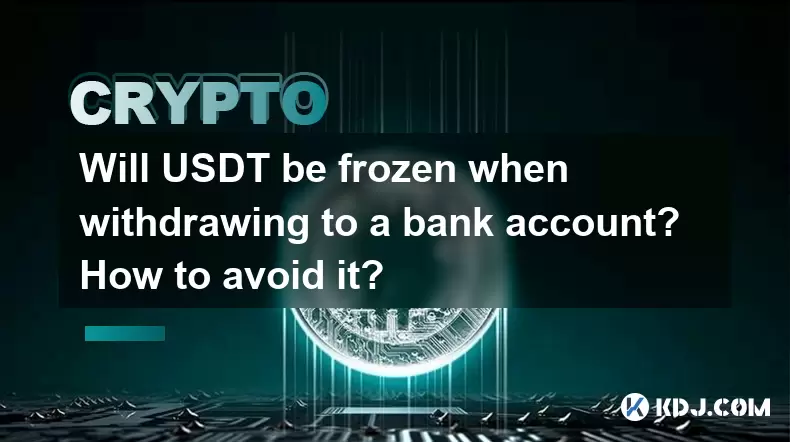
Will USDT be frozen when withdrawing to a bank account? How to avoid it?
Jun 15,2025 at 10:03am
Understanding USDT Withdrawals and Bank Account Freezing RisksWhen users decide to withdraw USDT (Tether) to a bank account, one of the most common concerns is whether their funds will be frozen during the process. This concern stems from real-life cases where individuals have encountered delays or restrictions when converting digital assets into fiat c...
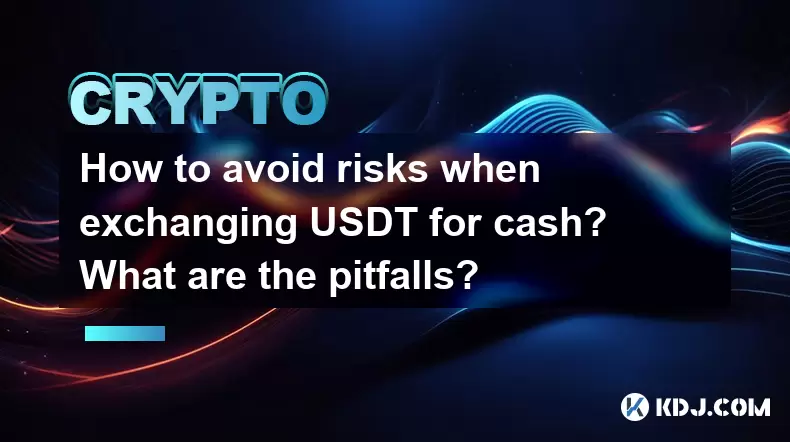
How to avoid risks when exchanging USDT for cash? What are the pitfalls?
Jun 11,2025 at 08:14pm
Understanding the Risks of Exchanging USDT for CashWhen exchanging USDT (Tether) for cash, users must be aware of the potential risks involved. As a stablecoin pegged to the US dollar, USDT is widely used in crypto transactions due to its price stability. However, converting it into fiat currency like USD or CNY can expose users to several pitfalls, inc...

How to choose a reliable USDT exchange service provider? How to identify?
Jun 12,2025 at 03:15pm
Understanding the Role of USDT in Cryptocurrency TradingUSDT (Tether) is one of the most widely used stablecoins in the cryptocurrency market. It is designed to maintain a 1:1 peg with the U.S. dollar, offering traders and investors a way to hedge against volatility while remaining within the crypto ecosystem. Choosing a reliable USDT exchange service p...

What is the most convenient way to cash out small amounts of USDT? Is there a shortcut?
Jun 11,2025 at 11:00pm
Understanding the Need to Cash Out Small USDT AmountsCashing out small amounts of USDT can be a challenge for many crypto users. Traditional methods often involve high fees, minimum withdrawal limits, or cumbersome verification processes that make it inefficient for small transactions. The key is to find a method that balances speed, cost, and convenien...

How to transfer USDT to PayPal or international payment tools?
Jun 15,2025 at 05:28am
Understanding the Basics of USDT and PayPal IntegrationUSDT (Tether) is a stablecoin pegged to the US dollar, offering blockchain-based value transfer with minimal volatility. PayPal, on the other hand, is a centralized digital wallet that facilitates fiat currency transactions globally. Direct integration between USDT and PayPal does not exist due to t...

How to exchange USDT for cash through P2P transactions? Is it safe?
Jun 18,2025 at 07:56am
Understanding USDT and P2P TransactionsTether (USDT) is a stablecoin pegged to the value of the US dollar, making it a popular choice for users who want to avoid the volatility of other cryptocurrencies while still participating in the crypto ecosystem. Peer-to-peer (P2P) transactions allow individuals to trade directly with each other without going thr...

Will USDT be frozen when withdrawing to a bank account? How to avoid it?
Jun 15,2025 at 10:03am
Understanding USDT Withdrawals and Bank Account Freezing RisksWhen users decide to withdraw USDT (Tether) to a bank account, one of the most common concerns is whether their funds will be frozen during the process. This concern stems from real-life cases where individuals have encountered delays or restrictions when converting digital assets into fiat c...

How to avoid risks when exchanging USDT for cash? What are the pitfalls?
Jun 11,2025 at 08:14pm
Understanding the Risks of Exchanging USDT for CashWhen exchanging USDT (Tether) for cash, users must be aware of the potential risks involved. As a stablecoin pegged to the US dollar, USDT is widely used in crypto transactions due to its price stability. However, converting it into fiat currency like USD or CNY can expose users to several pitfalls, inc...
See all articles























